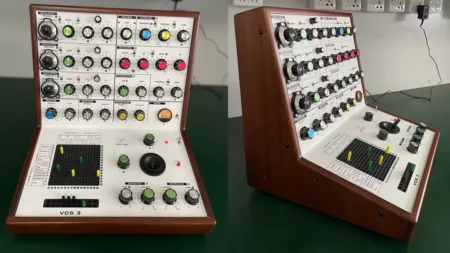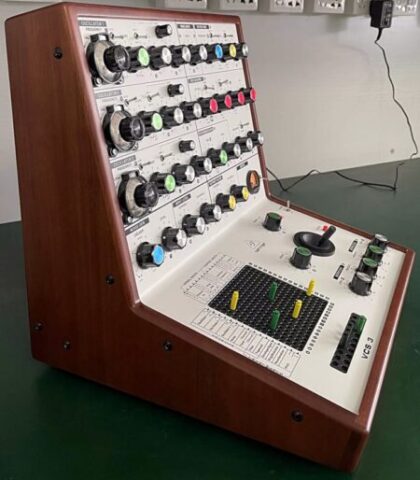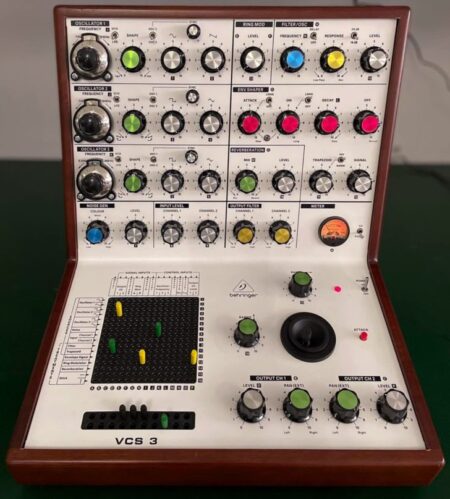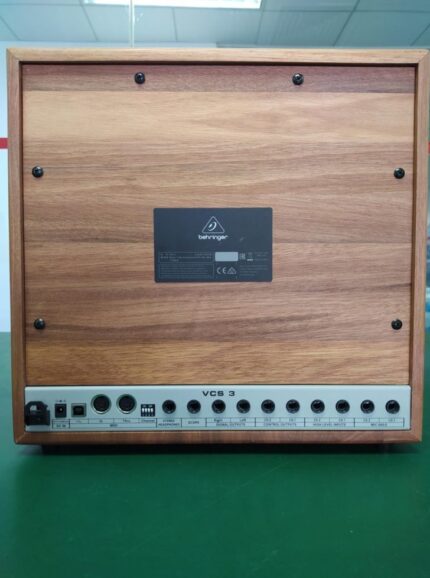Behringer Synthi VCS3 synth clone still Vaporware, but ‘Getting Close’
Behringer originally announced plans to build a version of the Synthi VCS 3 in 2017.
Behringer pins its hopes on its VCS3 synth clone: “we’re getting close with this beauty”
Behringer today shared a sneak preview of their upcoming unofficial copy of the classic Electronic Music Studios VCS 3 from 1969. And Behringer has been banging out the synth announcements at a rate of knots recently, but if you were starting to get the sense that the company might be prioritising quantity over authenticity – see the recent glut of affordable mini synths being launched – these shots of its prototype VCS3 clone might be enough to convince you otherwise.
The images shared today are of the final pre-production model. This one definitely looks suitably ‘vintage’, and Behringer says that the mechanical construction of the familiar pin matrix – plus the rest of the analogue circuitry – was very complex.
UK analogue expert John Price has been working for two years on delivering Putney perfection.
We are told that UK analogue expert John Price has spent two years working on emulating the sound of the VCS3, adding some new functions along the way.
The original VCS3 was one of the first truly portable synth created by EMS (Electronic Music Studios), which was formed when pioneering musician Peter Zinovieff partnered up with electronics boffin David Cockerell and composer Tristram Cary.
The VCS3 is a three-oscillator instrument, with the third oscillator intended as an LFO. Each oscillator produces two waveforms, and other sound sources comprise a noise generator and a pair of audio inputs.
A ring modulator and an 18dB resonant filter are onboard, the latter based on an unusual (but cost-effective) array of diodes and lending the VCS3 an instantly recognisable character.
A spring reverb adds a little ambience (and a lot of noise) to the signal, and there’s a four-stage “trapezoid” envelope generator with knobs for Attack, On, Decay, and Off. Setting Off anywhere less than fully clockwise makes the envelope retrigger.
What makes the VCS3 so special is its patching system. Unlike cable-laden semi-modulars such as the ARP 2600 or Korg MS-20, the VCS3 uses a 16×16 matrix into which pins are inserted to connect sources to destinations. The pins themselves have varying tolerances, making the process beautifully, astonishingly unpredictable.
Features (Preliminary):
- Analog synthesizer with triple VCO design
- Reproduction of original “VCS3” circuitry
- Analog signal path with VCO, VCF and VCA
- VCOs featuring multi-turn knobs for precise frequency control
- Variable oscillator shapes with variable pulse widths
- 24 dB low pass filter with resonance
- 16 x 16 pin patch bay serves as signal routing matrix by inserting pins into holes
- Ring modulator adds insane spice and edge to your sounds
- Dedicated and fully analog triangle/square wave LFO
- Noise generator dramatically expands waveform generation
- Two-axis joystick serves as performance controller
- 42 controls give you direct and real-time access to all important parameters
- External audio inputs for processing external sound sources
- MIDI implementation with MIDI channel and Voice Priority selection
- 3-Year Warranty Program
The back panel image, shared previously, shows connectivity not found on the original, including USB & DIN MIDI:
It probably would not surprise you to learn that, in common with many of its other proposed synths, Behringer’s take on the VCS3 – which we first heard about in 2019 – does not currently have a release date, and we do not know how much it will cost. It’s going out to beta testers now, though, so hopefully would not be too much longer in the pipeline.
The original EMS Synthi VCS3 is still in production, but availability is limited and used prices are now in the 5 digits.





























